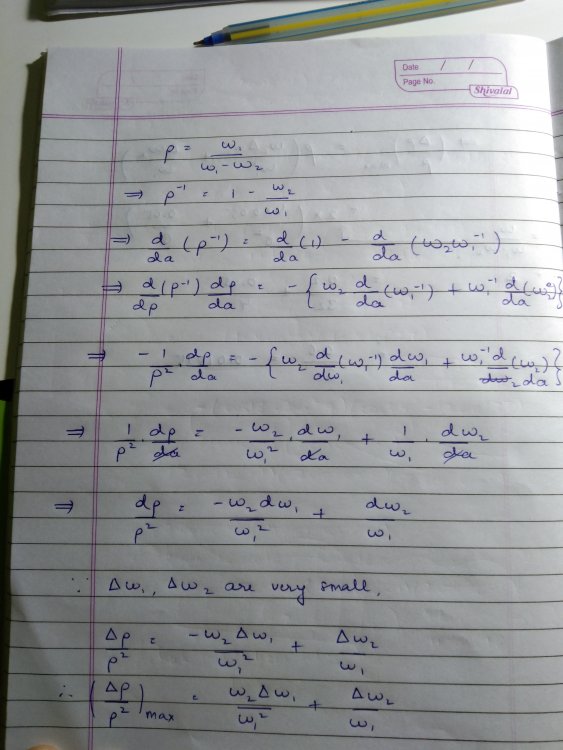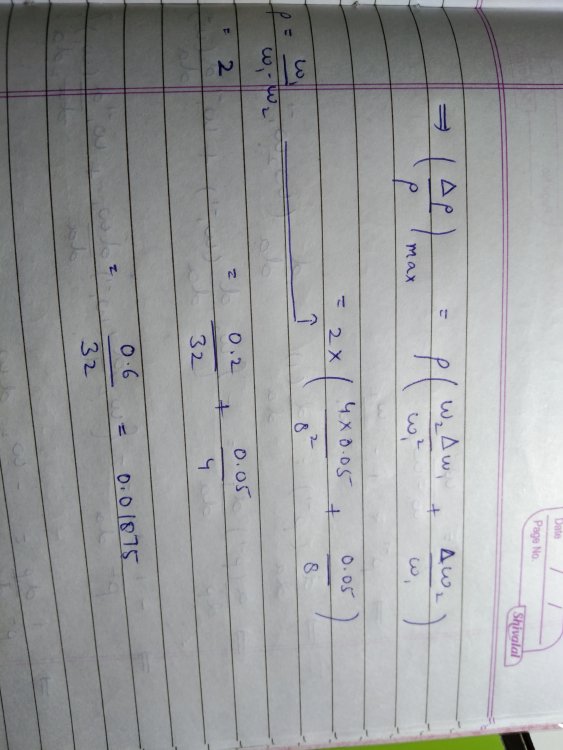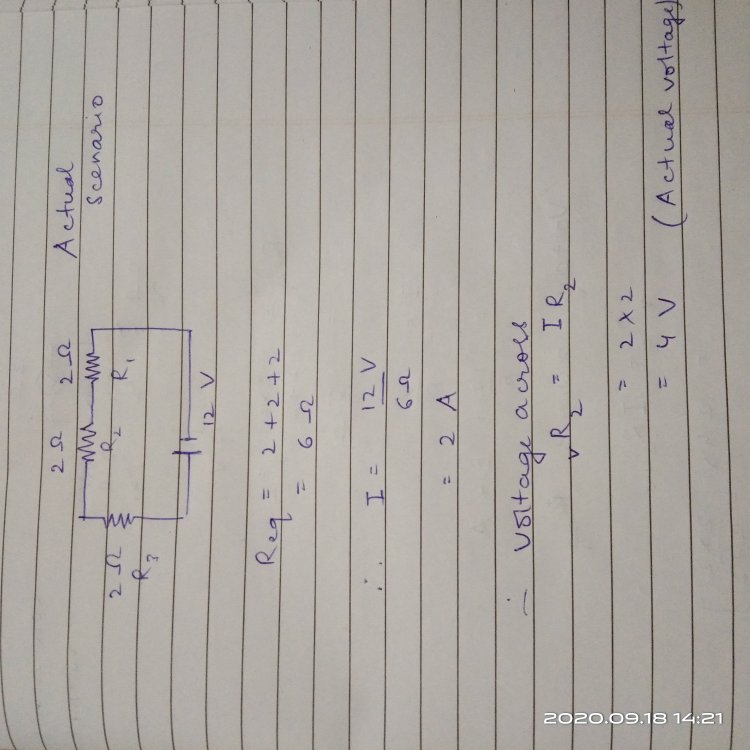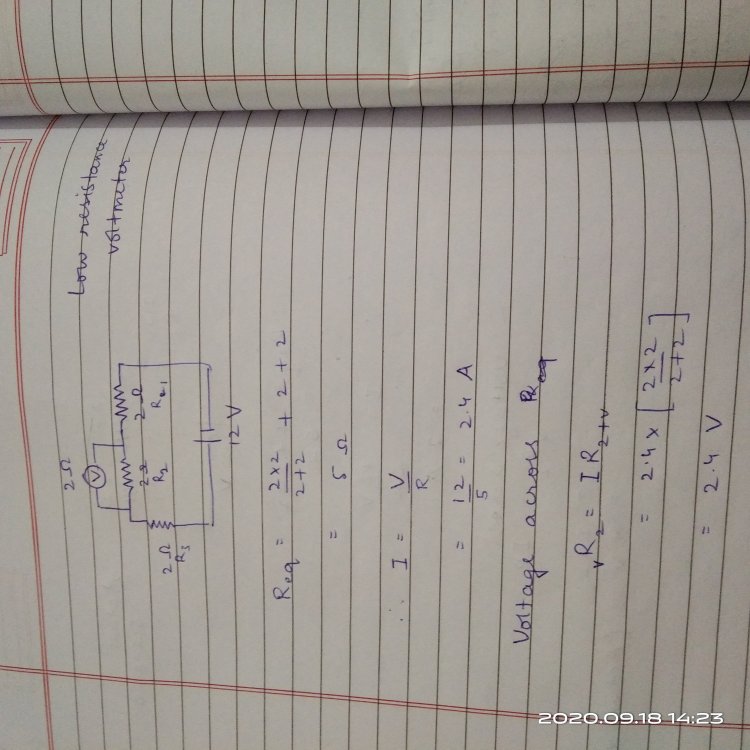

Arnav
Senior Members-
Posts
40 -
Joined
-
Last visited
Content Type
Profiles
Forums
Events
Everything posted by Arnav
-
Thank you studiot for the in depth explanation
-
Could you please elaborate what do u mean by "charge"? I mean, are u refering to "kind of charge(+ or -) on the droplets"? One of my ideas is this: The oil droplets caught both - and + charges,(some caught only -, some only +, while some both). Millikan knew how he had arranged the electrodes in the apparatus and how positive and negative charges would interact with them. If the charge on a droplet was net +, it would accelerate down when Electric field strength was increased while it would decelerate if it had net - charge. If it was neutral, there would be no effect. So, Millikan could determine the kind of charge on the droplet just by observing the effect of changing electric field on its vertical speed. Could the situation have been like this? Do you mean that he discovered that the charge was negative on every droplet? If so, why no + charge was found?
-
I was told to find the range of a function f(x) = (x²-1)/(x-1) where x cannot be 1. I know the proper solution is this : Since x cannot be 1, f(x) reduces to x+1 therefore Range = R - {2} Bu at my first attempt I did this: let y = (x²-1)/(x-1) yx - y = x²-1 x² - yx + y -1 =0 For x to be real, the discriminant of this equation should be >= 0 Therefore y² - 4(y-1) >= 0 (y-2)² >= 0 y can take all real values. Now, where did I go wrong? Why is 2 also coming in the range with the second method? How do I distinguish when to find the range using the 2nd method and when not?
-
In Millikan's oil drop experiment, when the oil droplets fell through the hole in the top plate, and passed through the ionised air, did only electrons get attached to the droplets? Or both the electrons and the cations? In my book, only electrons are shown as attached to the droplet. Why only electrons got stuck? Why not the positive ions as well? Or did they?
-
I was required to do the error analysis for an experiment with the aim of finding the relative density of a body. In the experiment, the weight of the body in air war found to be w₁ = 8.00 +- 0.05 N while the weight of the body in water was found to be w₂ = 4.00 +- 0.05 N. Using the relation, ρ = weight in air / (weight in air - weight in water) where ρ denotes relative density, I did the error analysis as shown in the attachment. However, my friend did the error analysis as this: ρ = w₁/(w₁- w₂) Δρ/ρ = Δw₁/w₁ + Δ(w₁- w₂)/(w₁- w₂) Δρ/ρ(max) = Δw₁/w₁ + (Δw₁+Δw₂)/(w₁- w₂) Δρ/ρ(max) = 0.05/8 + (0.05+0.05)/(8-4) Δρ/ρ(max) = 0.03125 Now, which one of us is right? who did it wrong?and how? in which of tge ways should we report the measurement? 2.00 +- 1.88% or 2.00 +- 3.12% ?
-

Ionisation in radioactive decay of atoms
Arnav replied to Arnav's topic in Modern and Theoretical Physics
Oh ok I understood. Thanks ! -

Ionisation in radioactive decay of atoms
Arnav replied to Arnav's topic in Modern and Theoretical Physics
It definitely does! Thanks Hey cuthber, could you please elaborate what do you mean by this? -
There is a question, a satisfactory answer to which I haven't received for long. In alpha decay, the number of protons in the parent atom decreases by two while the number of electrons in the atom remains same. Does the parent atom on undergoing alpha decay convert into an anion? In the same way, in beta minus decay, the following transformation takes place : ₀¹n ----> ₁¹p + e⁻ + v̅ the proton remains in the nucleus and electron and the antineutrino are ejected. From this, one could conclude that the positive charge on the atom increases by 1 while negative charge remains the same. Does the atom convert into a cation? Similar is an observation for beta plus decay, which appears to convert the parent atom into an anion. Is this ionisation of decaying substance observed in real situations? Or does it not even take place?
-
Thanks guys for taking out your time and answering my doubt. Sorry I've been a little too inactive
-
Sorry, but I haven't been taught about potential dividers yet. Yeah, I reckon in an actual circuit the number of resistors would be more than 1, as my case of "cell with 0 internal resistance and only one load" is very very ideal. So in a non-ideal case, even if we ignore the internal resistance of the source, the voltage measured by voltmeter would again come out to be less if its resistance is not very very high. I have uploaded 3 scenarios, one which is the actual case, one with low resistance voltmeter, and one with very high resistance voltmeter. I have ignored internal resistance of the cell. Couldn't upload the third case, but I know you guys get what I am trying to say
-
A voltmeter has a very high resistance so that it doesn't draw a considerable amount of current from the circuit when connected in parallel. Lets say we have a circuit consisting of a single cell and a load of resistance R. Now a voltmeter is connected in parallel with a load of resistance R. If the resistance of the voltmeter will be low, then it will draw some current from the circuit , leading to an increased magnitude of current in the circuit than before( or we can say equivalent resistance of the combination would be less than before, leading to increased current). If the cell has an internal resistance r, then the voltage drop across r would be more than before hence the voltage across R, which the voltmeter is to measure, will be less. Even if we take another resistance in series with R, and ignore r, then the measurements will be same, i.e. wrong. But, now imagine that we take an ideal cell with internal resistance=0, and connect the resistance R with the voltmeter in parallel with it. Now, the measurement of the voltmeter will not be wrong even if its resistance is low, am I right ? Sorry if I couldn't explain my question, if anyone wants, then I can send some calculations to put up my statement.
-
Thanks swansont for the paper, but I lost it at the caloric thing😅 Studiot, how did Avogadro conclude that the ratio of the volumes of two gases under similar conditions was equal to the ratio of their molecular weights? Sorry if I sound too dumb
-
How did Avogadro 'actually' derive his law stating "equal volumes of gases under similar conditions of temperature and pressure contain same number of molecules" ? I am a 10th grader so I would appreciate a lucid and intuitive explain if the derivation involves higher concepts of science.
-
Thank you for your reply studiot, but I couldn't follow the second last paragraph of your explanation, starting with Your book must have assumed.... You see guys, even here I am getting mixed answers, John says the data is insufficient and studiot says the question's fine.
-
Here's a question, and my doubt is at the end of the question. I have been struggling with this doubt for quite long and have been receiving mixed opinions. A cell of emf 12 v supplies a current of 400 mA to an appliance. After some time the current reduces to 320 mA and the appliance stops working. Find the resistance of the appliance, the terminal voltage of the battery when the appliance stops working, and the internal resistance of the cell. In my book, the answer to this ques is given as follows: 1. Given, emf = 12 volt, I = 0.4 A Therefore Resistance of the appliance R = emf/ I = 12/0.4 = 30 ohm 2. Given , I' = 0.32 A Terminal voltage of battery V = I'R = 0.32*30 = 9.6 volt 3. From emf= V - v, v ( voltage drop) = emf-V= 12-9.6= 2.4 volt From v= I'r, r = v/I'= 2.4/0.32= 7.5 ohm ( internal resistance) My doubt is, in the 1st part, why isn't R= resistance of the appliance + internal resistance? Why is the internal resistance of the cell ignored in part 1?




